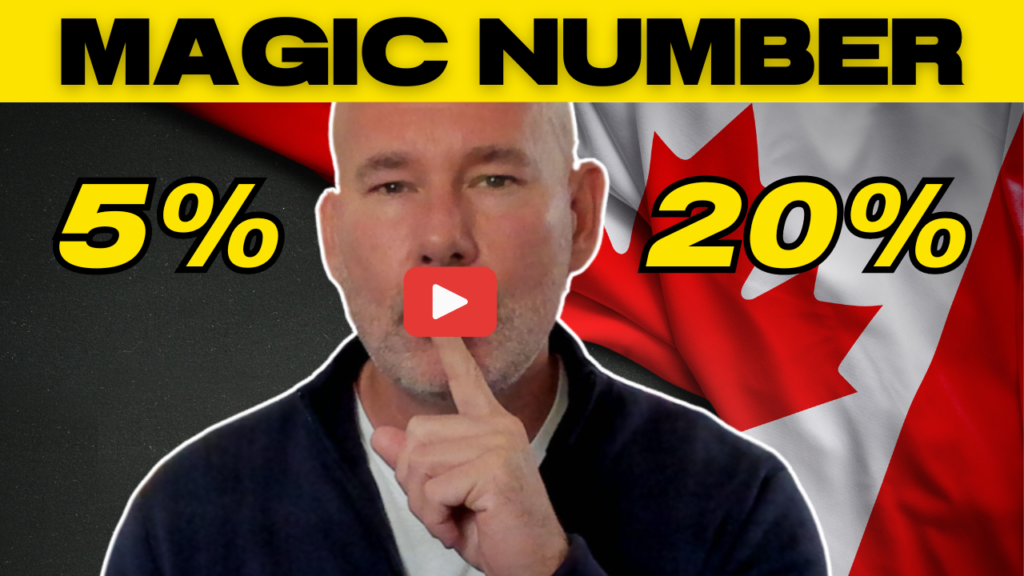
Are you ready to find out exactly how much cash you’ll need to get into your dream home? You might be surprised—it could be less than you think! Understanding these down payment rules can make or break your home-buying journey. In this blog post, I’ll break down the minimum down payments required in Canada, explain the differences between a deposit and a down payment, and give you some killer tips on how to save up for that big purchase. Trust me, you’ll want to stick around until the end because the last tip I share could save you tens of thousands of dollars!
What is a Down Payment?
First things first—what exactly is a down payment? When you get a mortgage, the down payment is the amount you’re required to pay upfront. It represents a portion of the price of the house you hope to buy. Think of it as your initial investment into your new home.
A down payment is typically made in cash, and the bigger your down payment, the smaller your mortgage will be. This means more equity in your home right from the get-go. And remember, home equity is simply the value of your house minus the mortgage amount.
Quick note: Don’t confuse your down payment with your deposit. Your deposit is what you put up during the buying process to show the seller you’re serious, while the down payment is part of the mortgage process and reduces the amount of money you need to borrow from the lender.
Minimum Down Payments in Canada
Now, let’s talk numbers. Can you buy a house in Canada with no down payment? Unfortunately, the answer is no. Canada has specific rules around minimum down payments that have been in place since 2008. Here’s the breakdown:
- For homes under $500,000: The minimum down payment is 5%. So, if you’re looking at a $400,000 home, you’ll need at least $20,000.
- For homes between $500,000 and $999,999: You need 5% for the first $500,000 and 10% for the amount above $500,000. So, if you’re buying a $700,000 home, you’ll need $25,000 for the first $500,000 and another $20,000 for the remaining $200,000, totaling $45,000.
- For homes $1 million or more: The minimum down payment jumps to 20%. So, a $1.5 million home requires at least $300,000 down.
When You Might Need More
Not everyone gets by with just the minimum down payment. If you’re self-employed, have a poor credit history, or if the monthly mortgage payments on your dream home are too big for your budget, lenders might require a larger down payment to reduce the mortgage size and those hefty monthly payments.
Mortgage Default Insurance
If your down payment is less than 20%, you’ll have to purchase mortgage default insurance. This protects your lender in case you can’t pay your mortgage. It’s an added cost, but it can help you get into your home sooner if you don’t have the full 20% down.
Tips for Saving Your Down Payment
Feeling like that 5%, 10%, or 20% down payment is a big mountain to climb? Here are some ways to make it happen:
- Prioritize and Budget: Look into your budget and cut costs. Skip the vacations, hold off on that new phone, and drive a cheaper car for now.
- Reduce Your Debt: Pay off your debts to free up more money for savings and improve your debt service ratios.
- Start a Down Payment Savings Account: Automate your savings and consider using a TFSA or a high-interest savings account to grow your money faster.
- Borrow from Your RRSP: You can borrow up to $35,000 from your RRSP tax-free for your first home. This can be a game-changer for getting that down payment ready sooner.
There’s so much more to know about buying a home, including finding the right neighborhood, knowing the types of houses to avoid, understanding closing costs, and more. Make sure to keep exploring to help you make the right home-buying decisions.
And remember to leave a comment below and share your thoughts or experiences. If you have any questions, feel free to ask! Happy house hunting!
